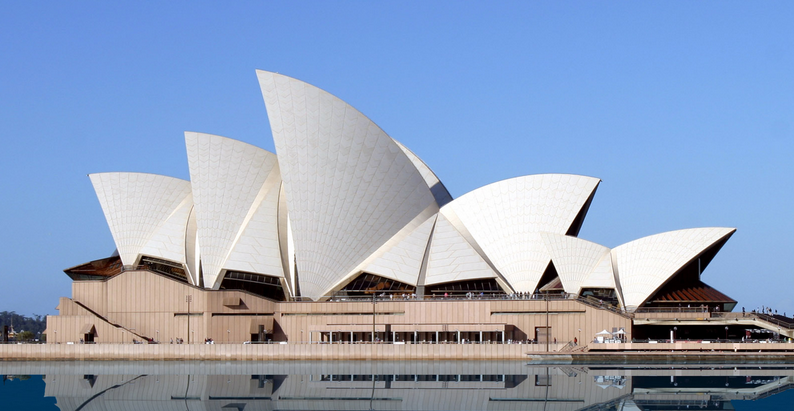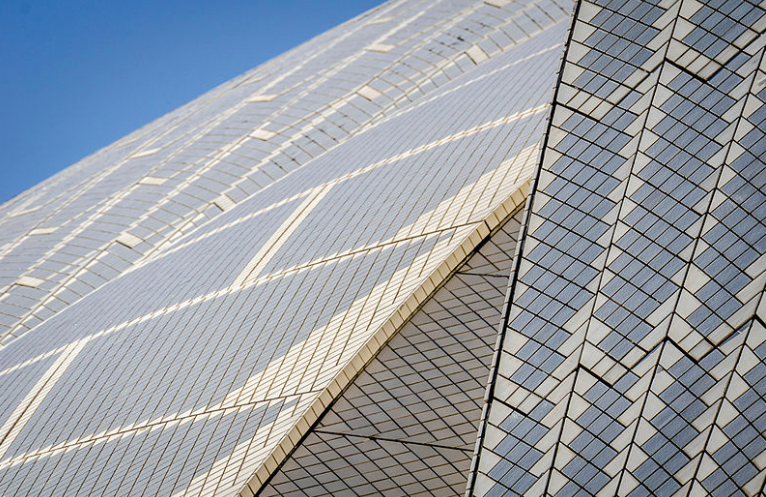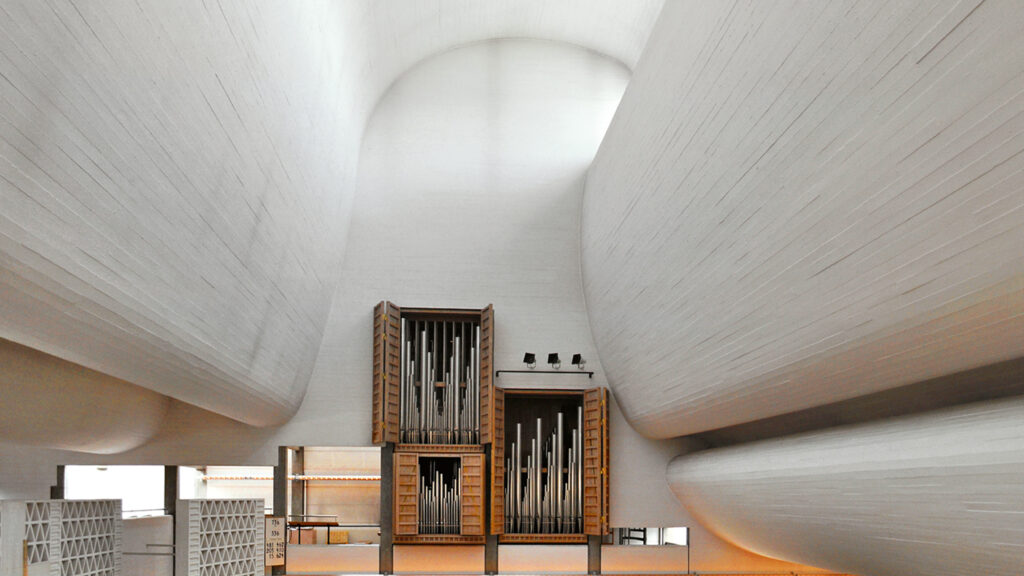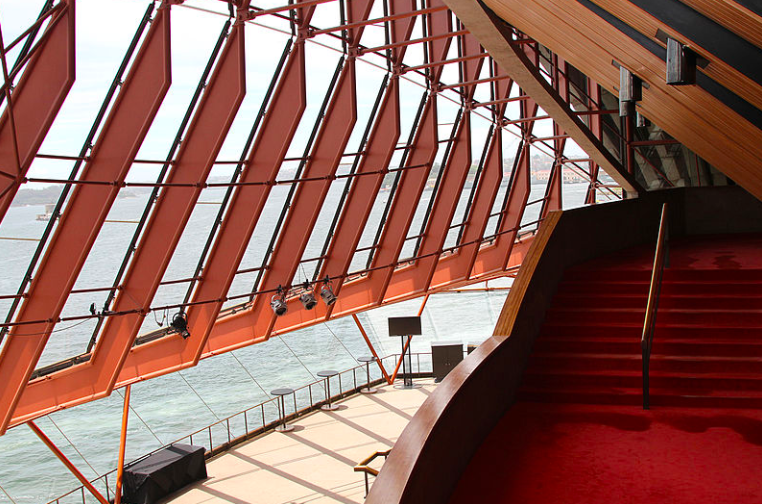2023 marks 50 years since the opening of Danish architect Jørn Utzon’s Sydney Opera House – one of the most celebrated and troubled architectural projects in history. It gets a passing mention in The Northern Silence, so here’s a little more (and some links to further writing).

Before the theatres in Oslo and Copenhagen, there was the opera house in Sydney – the life’s work of Danish architect Jørn Utzon, even though he spent the vast majority of his life estranged from it.
The story of the unknown Utzon’s winning of the contract to build the Sydney Opera House is the fairy-tale prelude to the nightmare that ensued. That didn’t stop the structure Utzon disowned becoming the world’s most iconic theatre – perhaps the most immediately recognisable man-made structure in the world.
Louis Kahn famously said of the Sydney Opera House that the sun did not know how beautiful its light was until it was reflected off it. Specifically, the sun was reflecting off more than a million clay tiles manufactured in Sweden by the ceramic factory Höganäs.
I’ve never been to Australia (I’ll get there one day) but my partner Sarah was baptised in the building Utzon designed immediately after the opera house: the parish church at Bagsværd in the north Copenhagen suburbs.

As written in The Northern Silence, Bagsværd Church (pronounced Bow-Svair) strikes me as an architectural counterpart to Svend Hvidfelt Nielsen’s Symphony No 3 – a symphony that spirals upwards before evaporating into white space much like the ‘horizontal’ tower of Utzon’s Church.
Apparently, Utzon conceived of the undulating surfaces that line the interior of the Bagsværd tower like rolling clouds while lying on a beach in Hawaii. He was tracking homewards, heartbroken, following the collapse of his relationship with his client in Sydney.
Before it all went sour, Utzon had moved his family to Australia and set up an office there staffed by aspiring Danish and local architects. It was a creative dream, until it wasn’t. Compromise after delay after soaring cost after yet more compromise resulted in the biggest calumny of all: Utzon’s enforced resignation at the hand of the newly elected Minister for Public Works, Davis Hughes, who insisted the design for the building’s interior be put out to fresh tender.

Hughes, in cahoots with the newly appointed house architects of Sydney City, authorized the pivotal design alteration that would set in train the building’s decades of practical and acoustic problems: the transferal of the opera auditorium to the smaller, second ‘pod’ indented for spoken theatre (Utzon’s plan was for a hybrid main auditorium that could present both concerts and opera).
Theatre moved to a space designed for backstage operations that would have no relationship with the building’s foyers nor its harbourside environment. Tons of specially built machinery and equipment was binned. Utzon’s ideals – a merging of principles borrowed from Yucatán temples and the building practices of the Sung dynasty – were unceremoniously trampled.
Utzon vowed never to step foot on Australian soil again. The project effectively ended his relationship with the famed structural engineer Ove Arup and practically torpedoed the architect’s own career – tainted, as it was, by the disgrace of a grand project left unfinished. Personally, Utzon was devastated. Barely a day went by, according to his son Jan, when wouldn’t make mention of the opera house in Sydney.
Utzon wouldn’t travel to Sydney again. But in 2005, 50 years since the announcement of the Sydney competition, Jan did so on his father’s behalf. Utzon was re-hired by the Opera House to make good on a tiny proportion of the havoc wrought on his own designs (mostly front-of-house, but incorporating improvements to the opera theatre), with his architect-son as partner and envoy.

Minds had softened. It was acknowledged by Utzon that the building was organic, imperfect and would be subjected to inevitable generational change. Almost more important was the sense of a reconciliation with Sydney, with Australia. It brought Utzon some peace and lubricated his path to work on other projects.
At the Utzon Center in Aalborg, the north Jutland city where Utzon’s father managed the shipyard, you can see the wooden model for his design for a new opera house in Zurich – a fascinating auditorium which, if built, would have been configured like no other (it was scrapped in a cost-cutting measure, a move described by some as yet another manifestation of the ‘Utzon Curse’). You can see drawings pertaining to his one other nationally significant project, the Kuwait National Assembly (eventually vandalised by violence and bad taste), and a boat designed by his father whose hull hints at the form of the Sydney building’s distinctive roof.
In the meantime, Australia’s long and admittedly apologetic attempt to put right what went wrong with Utzon’s building, as much for the benefit of the current audience as anyone else, has completed its latest phase – and right in time for the building’s half-centenary celebrations in 2023. This latest redress, mostly focused on the concert hall, has been deemed a triumph – a rare cause for joy in the history of a grossly troubled building. It was marked with a performance of, appropriately, Gustav Mahler’s Resurrection Symphony given by the Sydney Symphony under Simone Young.
Further Reading
Peter Murray: The Saga of the Sydney Opera House
Michael Asgaard Andersen: Jørn Utzon: Buildings and Drawings
Geraldine Brooks: Unfinished Business (The New Yorker, 2005)